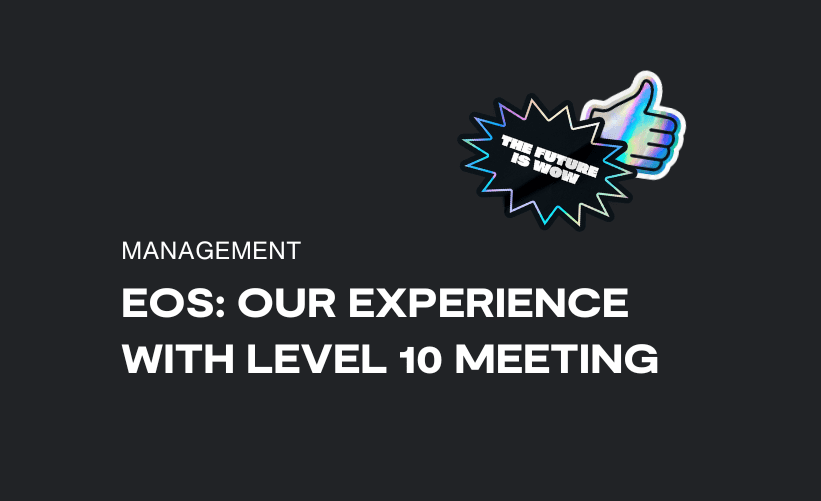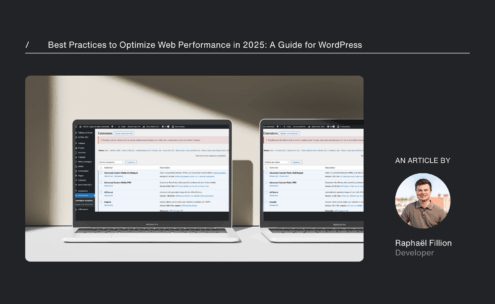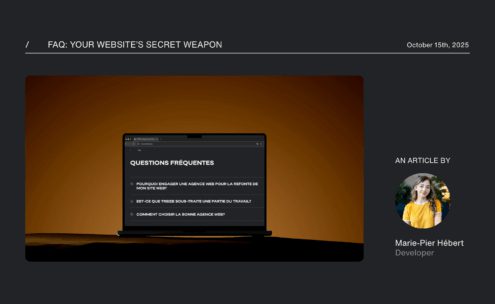When we decided to implement the Entrepreneurial Operating System (EOS) at TREIZE, we really wanted to test all the components to measure their impact. In this system, Level 10 Meetings (L10) immediately stand out as a powerful lever to break down silos, solve problems faster, and keep us on track with our goals.
Before that, some departments at TREIZE were already holding weekly meetings focused on their own issues and projects. It worked… up to a point. Information was circulating slowly, if at all, from one team to another. We didn’t necessarily see the challenges facing other teams, and vice versa. We therefore knew that the L10, by bringing everyone around the same table, would represent a sizeable challenge.
FIRST OF ALL, WHAT IS A LEVEL 10 MEETING?
Level 10 Meetings are mandatory weekly meetings of 90 minutes, always at the same time during the week. They follow a fixed agenda to maximize efficiency, and the majority of the time is dedicated to solving priority problems using the “IDS” method (Identify, Discuss, Solve). Each participant must respect the allotted time, stay focused on critical points, and avoid distractions. Every decision made must have a person in charge and a delivery date.
The term “Level 10” refers to the rating you aim for: a meeting considered perfect by everyone, rated 10 out of 10. At the end of each meeting, each person gives a rating from 1 to 10 to evaluate the meeting’s efficiency, productivity, and value. The idea is to strive for meetings that are so well organized and focused that they deserve this perfect score.
The L10 agenda is always the same:
- Check-in (5 minutes): A quick roundtable where each person shares a standout event (personal or professional).
- People Headlines (5 minutes): The good and bad news affecting the team (hirings, departures, successes, etc.).
- Scorecard (5 minutes): A review of the agency’s KPIs (key performance indicators).
- To-do List (5 minutes): Following up on the tasks assigned the previous week.
- Rocks (5 minutes): A status update on the progress of quarterly priorities.
- Issues (up to 60 minutes): The heart of the meeting: identify problems, discuss them, then solve them using the famous IDS process (Identify, Discuss, Solve).
The most important thing is to take a moment, right from the start, to step away from the daily grind and adopt a “working on the agency” rather than “working in the agency” mindset.
WHO TAKES PART IN THESE MEETINGS?
According to EOS, the ideal is to bring together the “leadership team.” At TREIZE, we don’t have an officially appointed director for each department, so we had to adapt by creating two L10 meetings:
- Main L10: One key person per department, responsible for representing their team’s issues.
- “Dev” L10: Since we’re a web development agency, we have enough developers to justify a second meeting focused on more specialized technical problems.
This structure keeps us connected to the agency’s major priorities while allowing deeper discussion of more technical questions in a dedicated setting.
ON THE EVE OF OUR FIRST L10S: APPREHENSIONS AND THE UNKNOWN
Just before our first L10s, we had two major concerns:
- The risk of confusion: by mixing all the teams, we could end up with too many issues and not know where to start.
- Friction: by bringing up friction points that affected multiple teams, we feared creating even more tension, hurting morale and cohesion rather than improving the situation.
Up until then, we solved problems “one by one,” only with the people directly involved. The idea of putting everything on the table each week, with several departments in the same room, was entirely new to us.
The IDS method was what worried us the most. Going from small-group discussions to a big collective brainstorming session where everyone gives their opinion… we were venturing into unknown territory.
In short, the team was torn between excitement and nervousness. We decided to run a test for a full quarter, without altering the agenda or the basic rules, to really put the concept to the test.
THE EARLY DAYS: MEETINGS THAT GO IN ALL KINDS OF DIRECTIONS
During our first L10s, we often went in a thousand directions during the Issues section. We thought we were solving a specific problem, but then discovered a whole bunch of underlying sub-problems. This “put everything on the table” mindset threw us off at first because:
- We frequently went over the 90-minute mark, going in circles on several topics.
- We were dealing with very concrete, day-to-day issues rather than the big strategic challenges we’d initially imagined.
At first, we wondered if we were “wasting” our L10 on details. But we quickly realized these day-to-day problems were our real issues at the time and that it was better to solve them in order to move forward more calmly afterward.
FRICTIONS THAT LEAD TO PROGRESS
With several departments together, tensions were not lacking. Each department had its own issues, and these different points of view came head-to-head during the L10. We won’t lie: yes, it led to some intense exchanges. But it’s precisely from these sometimes heated debates that our biggest improvements emerged. Even if that friction can be scary, it’s welcome. After all, like in a car, you can’t have traction without friction.
This helped us realize that some problems that seemed minor for one department were actually major blockers for another. By talking them through, we found improvements that worked for everyone. Plus, having multiple complementary minds around the table helped us find solutions to issues that seemed unsolvable. We left those meetings with new perspectives.
Gradually, we learned to address sensitive topics without anyone shutting down. The first few weeks were a bit rough, but we gained humility and mutual trust.
At TREIZE, kindness is one of our values. The L10s let us see it from another angle. Everyone understood how their work could affect others. Sometimes the discussions were difficult, but they ultimately brought the team closer together. We all realized our common goal is to improve our work environment and align the agency with its vision.
It took us a few months to really get comfortable with Level 10 Meetings, but the results are clear:
- Faster flow of information: instead of waiting for a major problem, we tackle topics before they even arise.
- Fewer silos, more collaboration: each department has a better understanding of the others’ reality, and we’re rowing together, in sync.
- Better responsiveness: issues are dealt with as a team, often permanently, rather than coming back over and over.
L10S: A TURNING POINT FOR TREIZE
Level 10 Meetings changed a lot of things at TREIZE. They prompted us to communicate differently, include every department in a shared vision, and resolve our issues collectively. In the end, we move faster, more calmly, and we’re all aiming for the same objective.
Now, we wouldn’t go without them. The initial frictions have turned into real traction that brings us closer, week after week, to our shared vision.
OUR FINAL ADVICE: DIVE IN HEADFIRST
For any organization interested in the Entrepreneurial Operating System and worried about setting up Level 10 Meetings, our advice is simple: follow the agenda and the rules to the letter at first, be disciplined, and trust the process.
Yes, it can feel a little strict, and some meetings will be more “productive” than others. But after one or two quarters, you’ll see your team making progress. People will learn to name problems at the right time, come back the following week with concrete solutions, and friction will become a true driver of improvement.
This series of articles is about EOS, the Entrepreneurial Operating System. We invite you to dive into our journey of implementing EOS at TREIZE. Throughout these articles, we’ll share not only EOS’s key concepts, but especially our concrete experience, our standout successes, and the challenges we encountered along the way.
If you’d like to discuss or learn more about why we chose to implement EOS or how we went about it, we encourage you to reach out by writing to jfsauriol@treize.pro.



